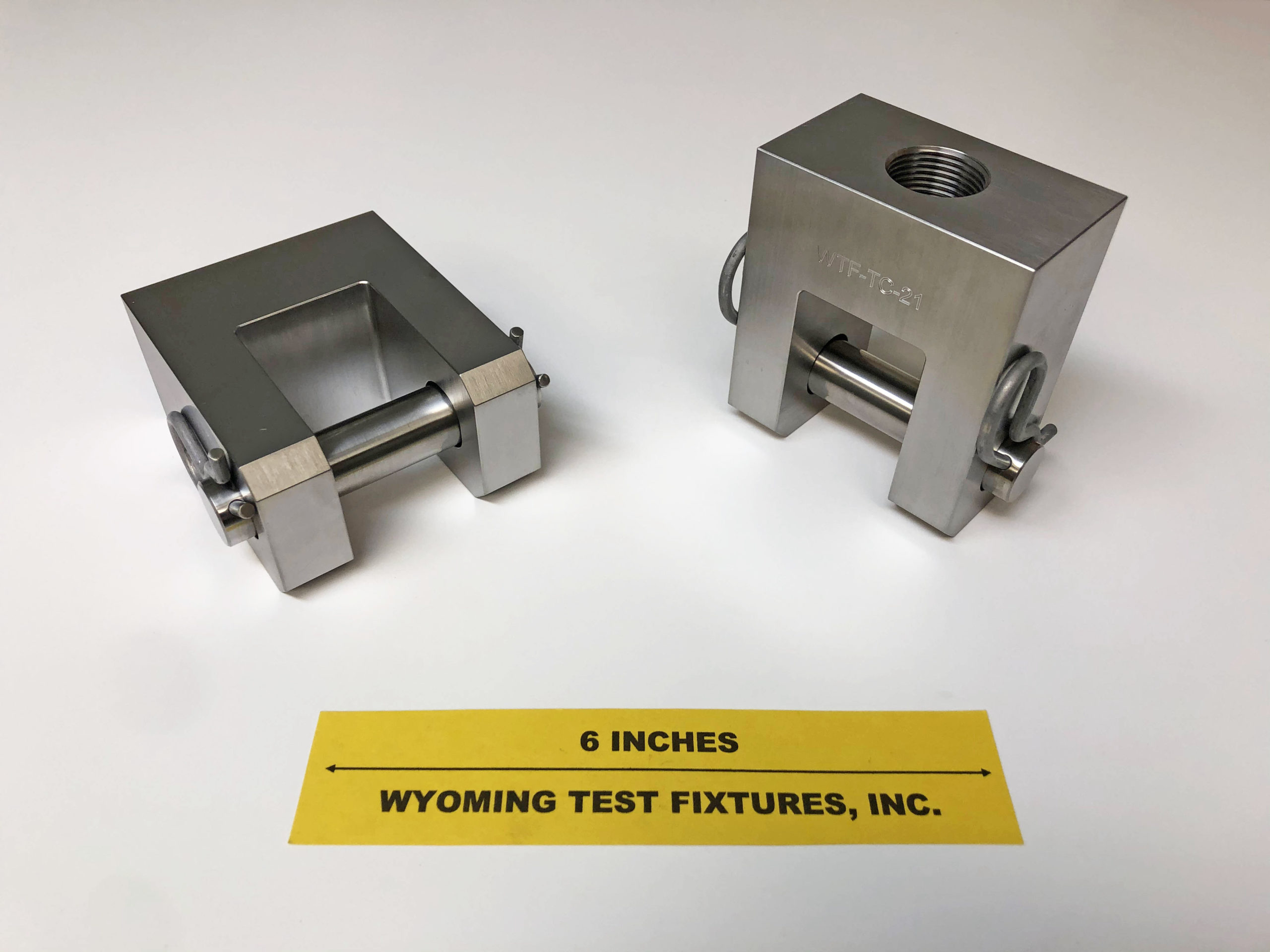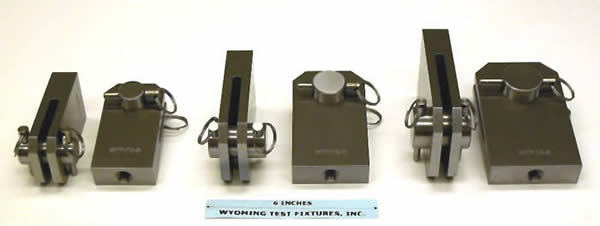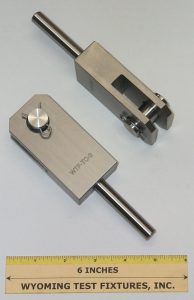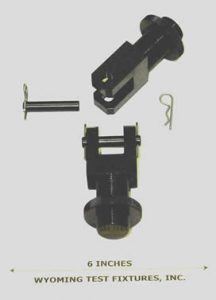Fracture Toughness Tensile Clevises (ASTM E399)
Model No. WTF-TC (Stainless Steel)

Fig. 1: Typical ASTM E399 Fracture Toughness Tensile Tensile Testing Clevices.
Clevises of all types and sizes can be designed and fabricated. A typical pair of clevises are shown in Fig. 1, these conforming to ASTM Standard E399 ( Reference 1). The clevises are typically fabricated using 17-4PH stainless steel but can be fabricated using other materials such as hardened 440C stainless steel depending on needs.
The three pair of tensile clevises of different sizes shown in Fig. 2 were fabricated of stainless steel, with hardened 440C stainless steel pins.

Fig. 2: Three pairs of Tensile Clevises of different sizes.
Other clevis designs and special attachment fittings of all sizes and configurations are available, or can be designed and fabricated to meet the specific requirements of any application to metals, composites, plastics, or ceramics testing. A number of standards exist for these purposes. For example, Reference 2 is an applicable ASTM standard for testing plastics, while Reference 3 addresses polymer matrix composites. References 4 and 5 are additional ASTM standards for metals. Reference 6 addresses fatigue crack growth.
When testing low strength materials such as plastics, clevises fabricated of lower cost steels can often be used.


Fig. 3: Special Tensile Clevices with optional adapters.
Source of Additional Information:
1) ASTM Standard E399-12e3, "Plane-Strain Fracture Toughness of Metallic Materials," American Society for Testing and Materials, West Conshohocken, Pennsylvania (first issued in 1970).
2) ASTM Standard D5045-99 (2007e1), "Plane-Strain Fracture Toughness and Strain Energy Release Rate of Plastic Materials,” American Society for Testing and Materials, West Conshohocken, Pennsylvania (first issued in 1990).
3) ASTM Standard E1922-04 (2010)e1, "Translaminar Fracture Toughness of Laminated Polymer Matrix Composite Materials,” American Society for Testing and Materials, West Conshohocken, Pennsylvania (first issued in 1997).
4) ASTM Standard E1290-08e1, "Crack-Tip Opening Displacement (CTOD) Fracture Toughness Measurement,” American Society for Testing and Materials, West Conshohocken, Pennsylvania (first issued in 1989).
5) ASTM Standard E1820-13, "Measurement of Fracture Toughness,” American Society for Testing and Materials, West Conshohocken, Pennsylvania (first issued in 1996).
6) ASTM Standard E647-13ae1, "Measurement of Fatigue Crack Growth Rates,” American Society for Testing and Materials, West Conshohocken, Pennsylvania (first issued in 1978).

